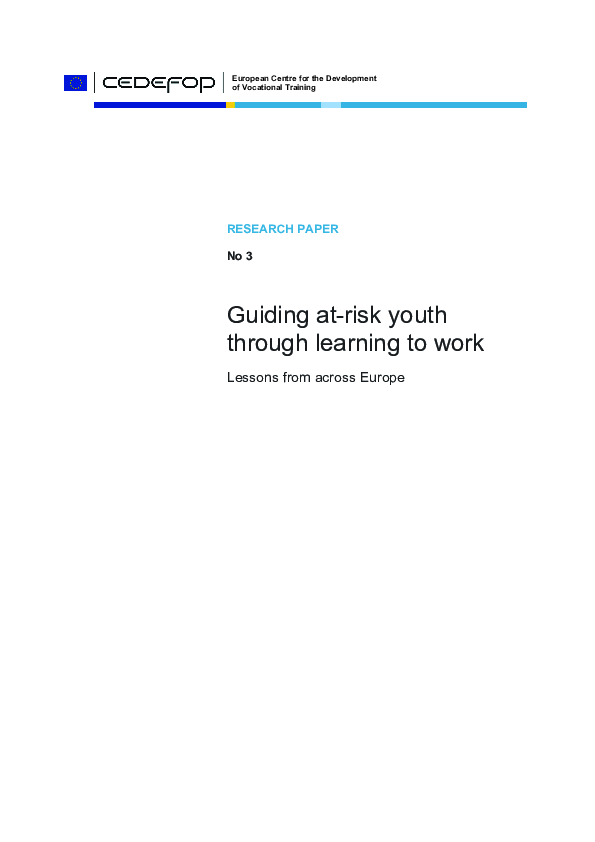Guiding at-risk youth through learning to work Lessons from across Europe

European Centre for the Development of Vocational Training, Thessaloniki
Publications Office of the European Union - Luxembourg
2010
172 p.
activation ; employment ; entry into working life ; transition from school to work ; youth
Research Paper
3
Education and training
English
Bibliogr.
978-92-896-0484-0
"The global economic crisis has given greater focus to improving guidance services for at-risk youth to support social inclusion, active participation in lifelong learning and smooth integration into working life. This Cedefop report draws attention to guidance measures and initiatives applied across Europe to aid school completion and education-to-work transitions of young people who risk dropping out of mainstream education and training or who already have done so.
The study suggests that coordinated approaches should be combined with outreach work to identify and reach those individuals who are in most urgent need of support. The partnership between different actors needs to be based on mutual trust and respect but also needs to place the interests of the young people first. Guidance professionals and teaching staff providing guidance services should learn how to establish a good working relationship with at-risk youth. Further, parental involvement, together with competent teachers, guidance practitioners, youth and social workers, labour-market actors, and healthcare providers, are considered essential support in the young person's transition.
The findings of this Cedefop study should encourage future action in the Member States on improving guidance service provision to at-risk youth. The overall goal across the European Union is to create good conditions for supporting young people's smooth transition from adolescence into a meaningful adulthood, with career and learning opportunities, partnership and parenthood, financial and residential independence. "
Digital
The ETUI is co-funded by the European Union. Views and opinions expressed are however those of the author(s) only and do not necessarily reflect those of the European Union or the ETUI.